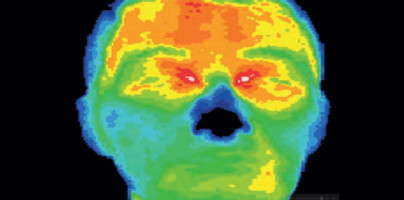COVID-19: Enhancing workplace safety
Published: 05 February, 2021
Matthew Marriott* looks at how electronic security can enhance workplace safety during the pandemic.
If you are planning to reopen your business or, indeed, have already done so but are looking at reviewing your safety measures to protect staff and visitors from COVID-19, no doubt you will already have put in place the more basic measures, such as extra cleaning, sanitation stations, 2m distance markings etc.
However, you may not have considered using your security systems to assist in making your business safer. Electronic security is prevalent throughout business premises, most frequently used to deter crime and keep people out of places they shouldn’t be. These systems are often multi-functional and may be leveraged to reinforce COVID-19 workplace policies and mitigate health, safety and security risks.
Maintaining social distancing We are all now familiar with the 2m social distancing rule and all businesses will have put in place measures to make people aware of this, such as markings on the floor. In some cases, you may need to monitor this to ensure the distancing is being observed. Manned guarding is an option, but it’s expensive and adds to the number of people in the area. An alternative is to use CCTV video analytics software for footfall counting and / or crowd video analytics to identify when people are congregating in too small an area. The systems can generate an alert at a pre-set threshold and an operative can then communicate with those people advising them to move apart or away from the area.
Elevated temperature detection Thermal cameras can have a role to play in helping prevent the spread of COVID-19 but they are not medical devices and cannot diagnose COVID 19. They are solely able to identify and alert users to someone who has an elevated temperature. This could be for a number of reasons, so you must put in place a well-defined protocol for dealing with a potentially unwell person. Don’t forget that many people with the virus are asymptomatic, so a thermal camera will not help in these instances.
Access denied
For staff who should be self-isolating, it’s essential they do not come into the workplace. An electronic access control system is the obvious solution here but ensure it’s one that’s easy to manage. You need to be able to instantly, but temporarily, remove access rights to an individual as soon as you have been informed of their health status. A cloud-based system is a good option as this can be done securely from afar.
The new guidance provides recommendations for managing contacts, including limiting visitor times to a specific time window, restricting access to required visitors only and keeping a record of visitors. An access control system can readily achieve all of this with minimum fuss.
Look, don’t touch
Government guidance specifies that you should be ‘providing alternatives to touch-based security devices such as keypads’. When it comes to access control systems, proximity systems that enable users to present a card or tag at a reader, without needing to touch that reader, are an ideal, well-established alternative. These are relatively inexpensive in terms of capital outlay, but they do come with the ongoing cost of issuing and managing tags/cards. To avoid that you could look at a biometric based system instead, such as readers that feature iris recognition. Whilst these involve a larger capital outlay, the ongoing costs are minimal.
Access control readers can be removed altogether from the equation if you instead opt for Facial Recognition through a CCTV systemFacial Recognition relies on matching a live facial image from a camera to a database that holds a biometric ‘map’ of each individual authorised to be on that site, using Artificial Intelligence.
Handle with care
In many instances, access control and facial recognition systems can be integrated with other on-site equipment to help reduce the number of people touching equipment. In offices, this could be printers or scanners. You could also look to link your access control system to automatic hand sanitiser dispensers mounted at the entrances to your premises. It could be set so ensure that people cannot gain access into your building or past reception if they haven’t sanitised their hands.
Equipment already exists for use in high risk areas, where a very strict hygiene level is required. These systems require both hands to be placed within the sanitation machine and only when the sanitation is completed will the door open.
Remote monitoring
With the aim being for the minimum number of people to work on site, businesses should consider the safety, security and peace of mind of those that are. Here, remote monitoring services may be advisable. For example, CCTV monitoring combined with the latest video analytics can monitor employees who are working either alone or in high risk/high security locations from a remote Monitoring Centre.
For a comprehensive remote solution, all your on-site security – intercoms, access control and CCTV – can be used to take over the duties of some, if not all, manned guards on site.
Monitoring Centre operatives have full control over the security systems and can activate/deactivate alarms, alert the emergency services, direct people or vehicles to specific areas. It’s an around the clock service, plus comes at a far lower cost than employing a team of security guards on site. This solution could also help to monitor the new drop off points or transfer zones that have been recommended, to prevent people passing things directly to each other.
Review & revise
To ensure the safety of all those on your premises it’s vital to review your health and safety procedures and take a long term approach. Employing appropriate technology now to help you manage the pandemic is an investment in your company’s future.
*Matthew Marriott is general manager (UK, Ireland and Portugal) at STANLEY Security
For more information:
https://twitter.com/STANLEYSec_GB
https://www.linkedin.com/company/stanley-security/
https://www.facebook.com/stanleysecuk/







